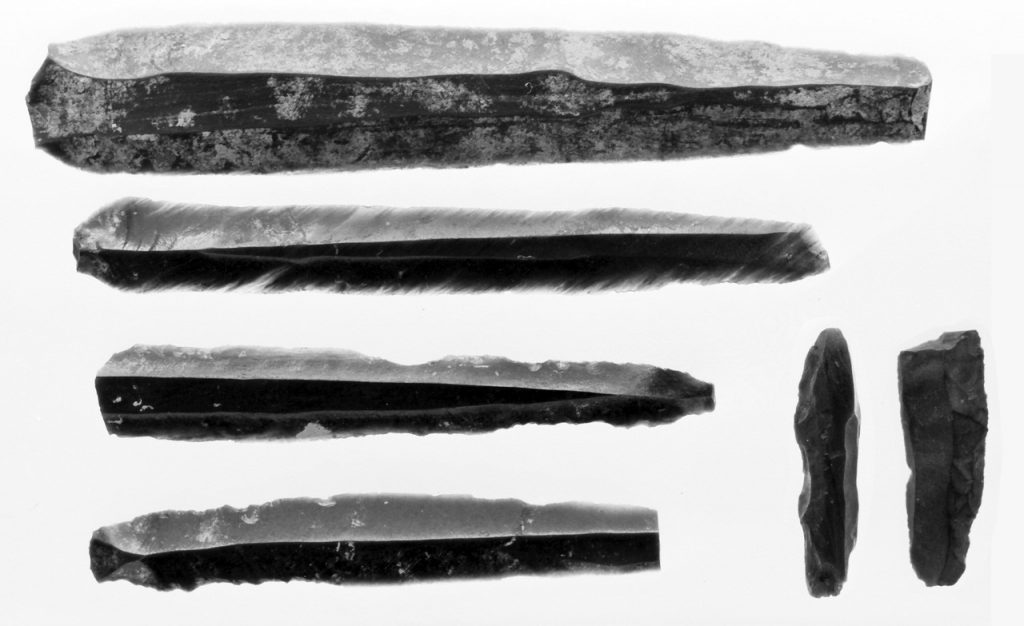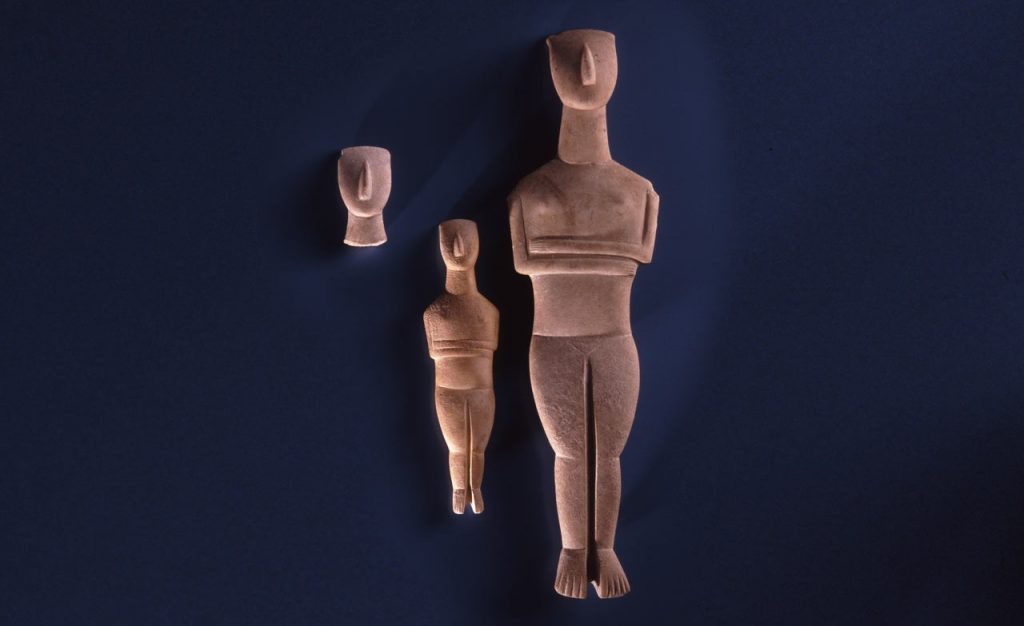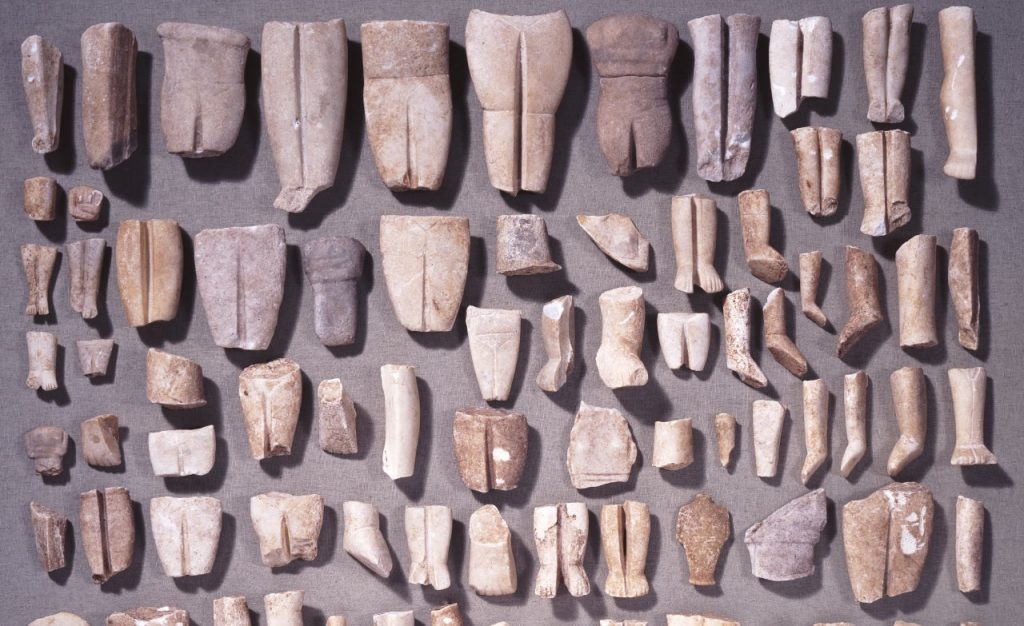Early Cycladic figurines were almost exclusively made of marble. Deposits of good quality white marble are available on most Cycladic islands. However, isotopic analysis of marble objects show that the main sources of marble in that period were Naxos, Keros, and, to a smaller extent, Paros and Ios. Apart from marble, Cycladic or Cycladic-type figurines…
Marble was worked mainly with stone tools. Although no direct evidence is available for the toolkit of the Cycladic craftsman, modern research in combination with experimental archaeology has shown that most tools were probably made of emery. A piece of this heavy and dense stone – which abounds in Naxos – can be easily turned…
Much of the modern admiration for Cycladic figurines and vessels stems from their abstract simplicity, which is greatly enhanced by the almost transparent quality of the white marble. However, we know that Cycladic artisans used to decorate their creations with bright colours, either for practical or for symbolic reasons. Traces of colour have been preserved…
Marble figurines are the most impressive creations of Cycladic art. They usually represent nude female figures with the arms folded above the abdomen (normally the left arm resting upon the right one), slightly flexed knees and a barely uplifted backward-slanting head. This type has been dubbed “canonical” by specialist scholars, because it accounts for the…
The meaning and function of Cycladic figurines is kind of an enigma. In the absence of written records, any interpretation has to be based exclusively upon archaeological finds and reasonable assumptions. Unfortunately, archaeological data is also insufficient due to the extensive looting of the Cycladic islands in the 1950s and 1960s, itself the result of…
The so-called “Keros Hoard” is an enigmatic group of Early Cycladic artifacts said to come from the site of Kavos on the now uninhabited islet of Keros, which lies between Naxos and Amorgos. The “Hoard” is said to have included at least 350 fragments of figurines of the “canonical” type (torsos, heads, members), a small…
Showing all 6 posts






